Jesuit General Ledochowski's plan for a Catholic federation of Europe has been fulfilled by the European Union. The entire EU government, its monetary system and secret Bilderberg Group were founded and have always been dominated by Jesuit Rome.
World War I starts with the Jesuit assassination of Archduke Franz Ferdinand to send a strong message to the Hapsburg dynasty.
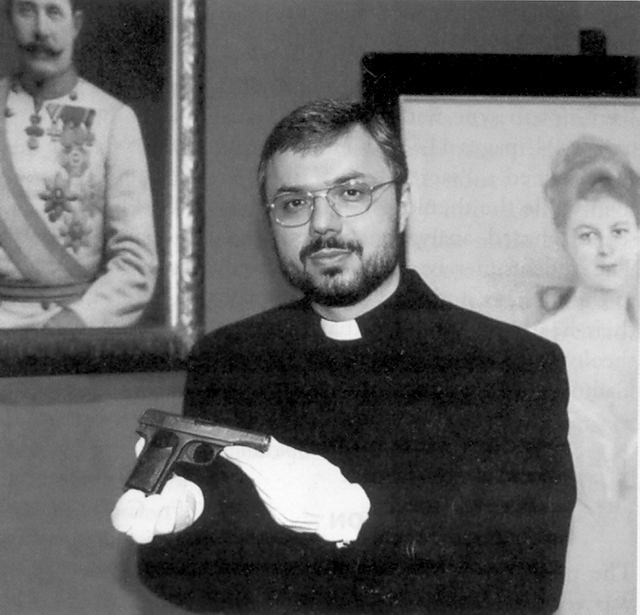
Above: Jesuit with Pistol that Shot Archduke Franz Ferdinand, 2004
Picture from Company: The World of Jesuits and Their Friends, “Austrian Jesuits and World War I Artifact,” Martin McHugh, Editor, (Chicago: Daniel L. Flaherty, SJ, Fall 2004) p. 5.
Franz Ferdinand, for opposing the Black Pope’s Pan-German movement, was “terminated” and given Last Rites by Jesuit Anton Puntigam who in turn was given the weapon by a friend of the Archduke. The Order had begun its WWI.
[...]
The last dynasty to revolt was the Hapsburg. The Jesuits had punished this family during the French Revolution with the beheading of Queen Marie Antoinette and later, in 1898, assassinated Elisabeththe Empress of Austria. Why? Franz Joseph, her husband and Emperor brought to power during the Order’s Second French Revolution in 1848, had enraged the Jesuits. He revoked the Austrian Concordat with Rome nullifying the Pope’s Temporal Power. Austria of all places! The Hapsburgs of Austria—the tools of the Jesuits’ Thirty Years’ War killing over ten million people in the attempt to exterminate Protestantism—breaking with Rome! Clearly the Catholic Hapsburg dynasty must go! So, in 1908 Austria annexed Kosovo outraging the Orthodox Serbian people. In 1914, six years later at Sarajevo, Archduke Franz Ferdinand of Austria was murdered in his coach, shot point blank in the chest by Oskar Potiorek, the Governor General of Sarajevo. The Archduke was then given last rites by a Jesuit priest, Anton Puntigam; and Gavrilo Princip’s (the patsy’s) pistol was kept in an Austrian Jesuit community house until donated to the Vienna Museum of Military History in 2004! By 1918, the Hapsburg dynasty begun in 1278 was finally history along with the Holy Alliance of European Monarchs. Four years later in 1922, Jesuit priest Ignaz Seipel became Chancellor of Austria. (That same year, Jesuit Edmund Walsh, aided by the secret power of Jesuit Archbishop Edward Ropp (1851-1939), installed Josef Stalin as the Secretary of the Communist Party. By 1924 Ropp, the Archbishop of Mohylew (1917-1939), had been “exiled” to Warsaw, cleverly ushered out of Russia!). Seipel—nicknamed “the Merciless Cardinal Chancellor” (although not literally a Cardinal) according to Edmond Paris in his masterpiece, The Vatican Against Europe—during his two terms (1922-24; 1926-29) destroyed every vestige of Austrian resistance to Hitler’s Nazism paving the way for the Anschluss (greatly increasing the Roman Catholic population of Pius XII’s Third Reich). The Order’s Chancellor Engelbert Dollfuss, although pro-Mussolini and a dictatorial fascist, ignorantly opposed the Jesuit General’s Anschluss for which he was assassinated by the Company’s Austrian Nazis.
Vatican Assassins III by Eric Jon Phelps, pg 1071
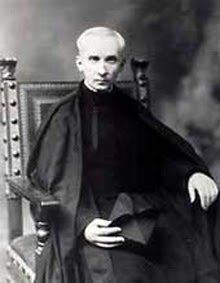
Above: Superior General of the Jesuit Order between 1915-1942, Wlodimir Ledochowski
At this time, the Superior General of the Jesuit Order - Wlodimir Ledóchowski - is crafting a plan to unite Europe under Catholic dominion:
Jesuit Superior General Ledochowski's plan (unified Catholic bloc led by the Jesuit Order in continental Europe)
“The Lateran Treaty, by which Mussolini showed his gratitude to the papacy, gave the Holy See, apart from the payment of one thousand 750 million liras (i.e. £20,000,000) the temporal sovereignty over the territory of Vatican city. Monseigneur Cristiani, prelate of His Holiness, explains the significance of this event:
“It is certain that the Constitution of the Vatican city was a matter of prime importance in order to establish the papacy as a political power”.(25)
We will not waste time trying to conciliate this explicit confession with the phrase so often heard that “the Roman Church is not involved in politics”. We will only point out the unique position in the world of a state which is secular and sacred, of equivocal nature as well, and the consequences of that position.
What are the Jesuitical crafty tricks used by this power which, depending on circumstances, makes use of her temporal or spiritual character, to be exempted from all the rules laid down by international laws? The nations themselves have lent their hand to this trickery and, by doing that, helped its penetration into their midst, the Trojan horse of clericalism. “The Pope seemed to identify himself too much with the dictators”(26), wrote M. Francois Charles-Roux, French ambassador to the Vatican. But could it be otherwise when the Holy See itself had raised these men to power?
Mussolini, the prototype, was the inaugurator of that series of “providential” men, these sword-bearers who would prepare the revenge for 1918. From Italy, where it prospered so well under the care of the Jesuit Father Tacchi Venturi and his acolytes, fascism was soon to be exported to Germany.
“Hitler receives his impetus from Mussolini; the ideal of the Nazis is the same as in Italy… Since Mussolini is at the head, all the sympathies are for Berlin… In 1923, his Fascism merges with National Socialism; he becomes friends with Hitler to whom he supplies arms and money”.(27) At that time, Monseigneur Pacelli, future Pius XII and, then, the Curia’s best diplomat, is Nuncio in Munich, capital of Catholic Bavaria. There, the star of the future German dictator starts to rise; he is also a Catholic, like his most important associates. Of that country, cradle of nazism, M. Maurice Laporte tells us: “Its two enemies are called Protestantism and Democracy”.Prussia’s anxiety is therefore understandable.
“It is easy to guess what kind of special care the Vatican gives Bavaria where Hitler’s National-Socialism recruits its strongest contingents”.(28) To take from “heretic” Prussia the control of the German “secular arm” and transfer it to Catholic Bavaria; what a dream! Monseigneur Pacelli puts all in his power to realise it, acting in concert with the chief of the Company of Jesus.
“After the other war (1914-1918), the Jesuits’ general, Halke von Ledochowski, had conceived a vast plan… the creation, with or without emperor Hapsburg, of a federation of the Catholic nations in central and eastern Europe: Austria, Slovakia, Bohemia, Poland, Hungary, Croatia and, of course, Bavaria.
“This new central Empire had to fight on two fronts: on the eastern side against the Soviet Union, on the western side against Prussia, Protestant Great-Britain and republican, rebellious France. At that time, Monseigneur Pacelli, future Pius XII, was nuncio in Munich, then in Berlin, and an intimate friend of Cardinal Faulhaber, von Ledochowski’s main collaborator. The Ledochowski plan was the dream of Pius XII’s youth“.(29)
But was it only a dream of youth? The “Mittel-Europa” Hitler tried to organise was very similar to that plan, apart from the presence, in that block, of Lutheran Prussia, a not very dangerous minority, and the recognised zones of influence which—maybe temporarally—belonged to Italy. In fact, it was the Ledochowski plan, adapted to the needs of the time, which the Fuhrer was trying to realise, under the patronage of the Holy See, with the help of Franz von Papen, secret chamberlain of the pope, and the nuncio to Munich, then Berlin, Monseigneur Pacelli.
M. Francois Charles-Roux writes: “During the contemporary epoch world politics never felt the Catholic intervention more than during the ministry of Monseigneur Pacelli”.(30)
And from M. Joseph Rovan: “Now, Catholic Bavaria… is going to welcome and protect all those who sow trouble, all those confederates and assassins of de la Saint-Vehme”.(31)
From amongst these agitators, the choice of Germany’s “regenerators” will fall upon Hitler, who is destined to triumph over the “democratic mistakes” under the Holy Father’s standard. Of course, he is a Catholic, like his principal collaborators.
“The nazi regime is like a return to the government of southern Germany. The names and origins of its chiefs demonstrate it: Hitler is specifically Austrian, Goering is Bavarian, Goebbels is Rhenish, and so on”.(32)
In 1924, the Holy See signs a Concordat with Bavaria. In 1927, we can read in “Cologne’s Gazette”: “Pius XI is certainly the most German pope who ever sat on the throne of Saint-Peter”.
His successor, Pius XII, will rob him of this palm. But, for the time being, he pursues his diplomatic career—rather his political career—in this Germany for which, as he later told Ribbentrop, “he would always have a special affection”. Promoted nuncio in Berlin, he works, with Franz von Papen, at destroying the Weimar Republic. On the 20th of July 1932, a state of siege is proclaimed in Berlin and the ministers expelled “manu militari”. It is the first step towards hitlerian dictatorship. New elections are prepared which will establish the success of the nazis.
“With Hitler’s approval, Goering and Strasser got in contact with Monseigneur Kaas, party chief of the Catholic Centre”.(33)
Cardinal Bertram, archbishop of Breslau and primate of Germany, declared: “We, Christians and Catholics, do not recognise any religion or race…”. With many other bishops, he tried to warn the faithful against “the pagan ideal of the nazis”. Obviously, this prelate had not understood papal politics, but he was soon going to be taught.
“The “Mercure de France” gave an excellent study in 1934:
“In the beginning of 1932, German Catholics did not consider they had lost the cause but, in the spring, their chiefs seemed somewhat irresolute: they had been told that “the Pope was personally in favour of Hitler”.
“That Pius XI was sympathetic to Hitler should not surprise us… For him, Europe could settle down again only through Germany’s hegemony… The Vatican had thought of changing the centre of gravity of the Reich, through the Anschluss, for a long time, and the Company of Jesus was openly working towards that aim (Ledochowski’s plan), especially in Austria. We know how Pius XI depended on Austria to make what he called his politics triumph. What had to be prevented was the hegemony of Protestant Prussia and, as the Reich was the one to dominate Europe… a Reich had to be rebuilt where the Catholics would be masters…
“In March 1933, the German bishops, meeting at Fulda, took advantage of the speech Hitler gave at Potsdam to declare: We must admit that the highest representative of the government of the Reich, who is at the same time the head of the national-socialist movement, has made public and solemn declarations, by which the inviolability of the Catholic doctrine, the work and unchangeable rights of the Church are recognised… “Von Papen leaves for Rome. This man, whose past is so wicked, becomes a pious pilgrim with the mission to conclude a Concordat (for the whole of Germany) with the Pope. He too will have to emulate Mussolini’s overtures towards the Vatican.(34)
In fact, the same happens in both countries: in Italy, the Catholic party of don Sturzo ensures Mussolini’s accession to power; in Germany, the “Zentrum” of Monseigneur Kaas does the same for Hitler—and, on both occasions, a Concordat seals the pact.
M. Joseph Rovan admits this as follows: “Thanks to von Papen, deputy at the Zentrum since 1920 and owner of the party’s official publication ‘Germania’. Hitler came to power on the 30th of January 1933… “German political Catholicism, instead of becoming Christian Democrat, was eventually made to confer full powers on Hitler, on the 26th of March 1933… To vote in favour of full powers, a two-thirds majority was necessary and the votes of the “Zentrum” were indispensable to obtain it”.(35)
The same author adds: “In the correspondance and declarations of ecclesiastical dignitaries, we will always find, under the nazi regime, the fervent approval of the bishops”.(36)
This fervour is easily explained when we read the following from von Papen: “The general terms of the Concordat were more favourable than all other similar agreements signed by the Vatican”, and, “the Chancellor Hitler asked me to assure the papal secretary of State (Cardinal Pacelli) that he would immediately muzzle the anticlerical clan”.(37)
This was not an empty promise. Already during that year (1933), apart from the massacre of Jews and assassinations perpetrated by the Nazis. There were 45 concentration camps in Germany, with 40,000 prisoners of various political opinions, but mostly liberals. Franz von Papen, the pope’s secret chamberlain, defined perfectly the deep meaning of the pact between the Vatican and Hitler by this phrase worth engraving: “Nazism is a Christian reaction against the spirit of 1789″.
In 1937, Pius XI, under the pressure of world opinion, “condemned” the racial theories as incompatible with Catholic doctrine and principles, in what his apologists amusingly call the “terrible” encyclical letter “Mit brennender Sorge”. Nazi racism is condemned, but not Hitler, its promoter: “Distinguio”. And the Vatican takes care not to denounce the “advantagous” Concordat concluded, four years earlier, with the nazi Reich.
While the cross of Christ and the Swastika were co-operating in Germany. Benito Mussolini set forth on the easy conquest of Ethiopia, with the Holy Father’s blessing.
“… The Sovereign Pontiff had not condemened Mussolini’s politics and had left the Italian clergy fully free to co-operate with the Fascist government… The ecclesiastics, from the priests of humble parishes to the cardinals, spoke in favour of the war…
“One of the most striking examples came from the Cardinal-Archbishop of Milan, Alfredo Ildefonso Schuster (Jesuit), who went as far as calling this campaign “a Catholic crusade”.(38) “Italy”, clarified Pius XI, “thinks this war is justified because of a pressing need for expansion…” “Ten days later, when speaking to an audience of ex-servicemen, Pius XI expressed the wish that the legitime claims of a great and noble nation from which, he reminded them he himself descended, would be satisfied”.(39) The Fascist aggression against Albania, on Good Friday in 1939, enjoyed the same “understanding”, as we are told by M. Camille Cianfarra:
“The Italian occupation of Albania was very advantagous for the Church… Out of a population of one million Albanian people, which became Italian subjects, 68% were Moslems, 20% Greek Orthodox and only 12% Roman Catholics… From the political point of view, the annexation of the country by a Catholic power was bound to improve the position of the Church and please the Vatican”.(40)”
The Secret History of the Jesuits By Edmond Paris pgs 126-131
At the end of WWII, Ledochowski's plan was the impetus for support by many western nations of a Vatican plot for Hapsburg restoration over a future Central European Catholic superstate (with the feeling that the Hapsburg's had learned their lesson and would not betray the Jesuits again):
American intelligence report in support of Vatican plot to restore Hapsburgs as monarchs of a Central European Catholic State in 1945
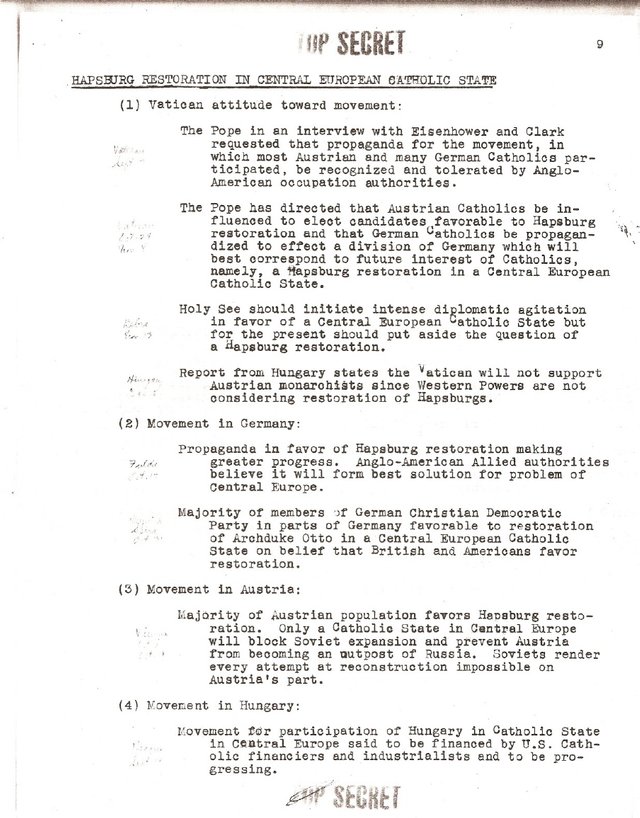
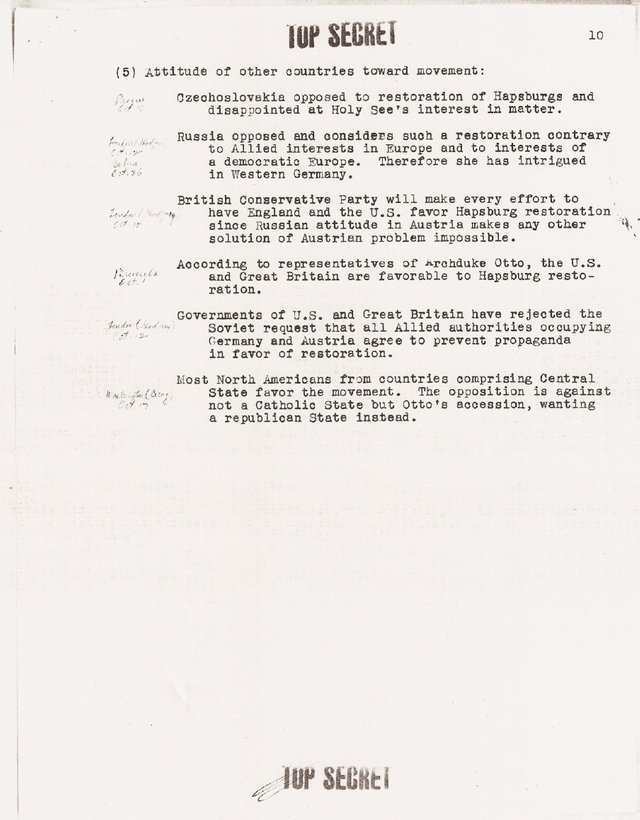
The groundwork for Ledochowski's plan was to be laid by the European Movement, which developed into the European Union:
The European Movement was founded by Józef Retinger who trained as a Jesuit priest and was considered an agent of the Vatican.
Retinger met personally with Jesuit General Ledochowski at his family castle in Zizers.
The Bilderberg Group was also later founded by Jesuit Joseph Retinger.

Above: Józef Retinger, Jesuit papal agent
https://www.youtube.com/watch?v=uOq9myTv8qo
Count Zamoyski prepared young Retinger for a political career, providing him with comprehensive education and excellent linguistic competences. He mastered several European languages and a few Asian ones, which was to facilitate his contacts in the future as well as success in his activities in the international forum. Having lost his parents, against the will of his guardian, he decided to devote his life to a spiritual career and began his novitiate with the Jesuits in Rome. However, Count Zamoyski’s arguments prevailed. He started studies at École des Sciences Politiques in Paris and next studied in Munich and Florence. In 1908, being twenty, he received the title of docteur des lettres from Sorbonne. Then he moved to London where he studied comparative psychology of nations which in the future proved very useful. In London, he got acquainted with Józef Conrad-Korzeniowski, English cultural and political elites and masonry.
......... "In 1912, he was back in London, where, inspired by Count Zamoyski, he established Biuro Polskie [Polish Bureau] and tried to win support of West European politicians and public opinion for the idea of Poland’s rebirth. He published a lot, organised pro-Polish manifestations, supported Polish emigrees in Great Britain. Owing to his undeniable intellectual merits, linguistic competence, nice looks and protection by Count Zamoyski and the Godebski family to which he was related, the young Retinger was a frequent guest at Parisian and London parlours. It was then that he made many acquaintances and friends with eminent representatives of the world of culture, politics and business. He made acquaintance among others with Paul Valery, André Gide, Maurice Ravel, French Prime Minister Georges Clemenceau, the British Marshall Horatio Herbert Lord Kitchener, Winston Churchill, the subsequent British ambassador in Moscow Stafford Cripps and many other prominent persons. Later, he took advantage of those acquaintances many times, including when before World War I he was trying to persuade Prime Minister Clemenceau to support a plan to unify Eastern Europe by means of unification of Austria, Hunagry and the Polish territories in a three-national monarchy under the hegemony of the Jesuit Order. Being in no doubt that that plan had originated in the Vatican circles, Clemenceau rejected it, while Retinger earned a solid and not too glorious label of a Vatican agent. The easiness with which he was able to get in touch with various prominent personages suprised even most experienced diplomatic veterans. During his funeral in 1960, Sir Edward Bedington-Behrens, a wealthy American financier, secretary to the European Movement and Retinger’s friend, recalled: „I remember when Retinger was in the United States, it was enough for him to lift the receiver and he was being contacted with President who had a meeting with him and in Europe doors were open for him in all political circles”
A Polish Link in the European Unification by Edward A. Mierzwa pages 249-250
When the European Union was developing from the Jesuit's European Movement, it is no surprise that the EU's founders were devout Catholics, and EU leadership remains staunchly Catholic today:
The primary founders of the European Union were devout Catholics:
Most of the founders of the European Union —Konrad Adenauer, Jacques Delors, Alcide de Gasperi and Robert Schuman—were also devout Catholics.[10]
https://en.wikipedia.org/wiki/Ars%C3%A8ne_Heitz
"Father of the euro" - Belgian Catholic Alexandre Lamfalussy. He also founded the European Monetary Institute which was the forerunner to the European Central Bank.
Current and historical EU leadership - overwhelmingly Jesuit Catholic:
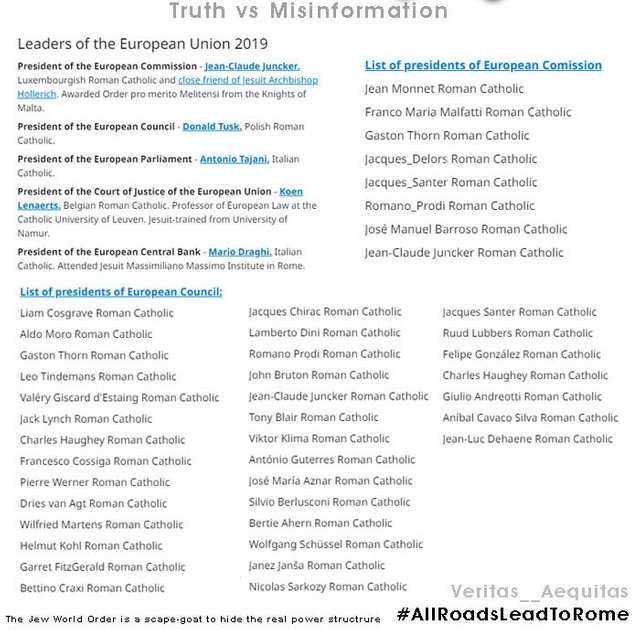
Hallo @romerules, herzlich willkommen auf Steemit.
Wenn Du Fragen zu Steemit hast, oder Dich mit anderen „Steemians“ austauschen magst, schau einfach mal auf unserem Discord-Chat unter https://discord.gg/g6ktN45 vorbei. Mehr Informationen über den deutschsprachigen Discord-Chat findest Du in diesem Beitrag.
Wenn fehlende 'Ressource Credits' (kurz 'RC') verhindern, daß du auf Steemit vernünftig interagieren kannst, dann melde Dich einfach mit einer kurzen Beschreibung oder Bewerbung im Channel #Delegationsbewerbung des oben genannten D-A-CH Discord. Dort werden eventuelle Unterstützer schneller auf Dich aufmerksam.
Wenn Du auf Deutsch schreibst, verwende immer #deutsch als einen der 5 Hashtags, um Deine Reichweite zu erhöhen.
Unter dem folgenden Link findest Du einige Anleitungen, die Dir den Einstieg in das Steem-Universum deutlich erleichtern werden: Deutschsprachige Tutorials für Steemit-Neulinge: Ein Überblick
Congratulations @romerules! You have completed the following achievement on the Steem blockchain and have been rewarded with new badge(s) :
You can view your badges on your Steem Board and compare to others on the Steem Ranking
If you no longer want to receive notifications, reply to this comment with the word
STOPVote for @Steemitboard as a witness to get one more award and increased upvotes!
This has long been my theory of World War Two, the bombing of Nagasaki even makes sense.
I also feel that the Vatican has been pushing Socialism while at the same time have you noticed most of the (Admittedly good) conservative voices are Catholic; Gavin Mcinnes, Milo, Faith Goldy, Victor Orban, whoever is doing a great job in Poland.
I find it amazing that more people don't realize that the Vatican has global domination as it's main goal like it has said openly for centuries.